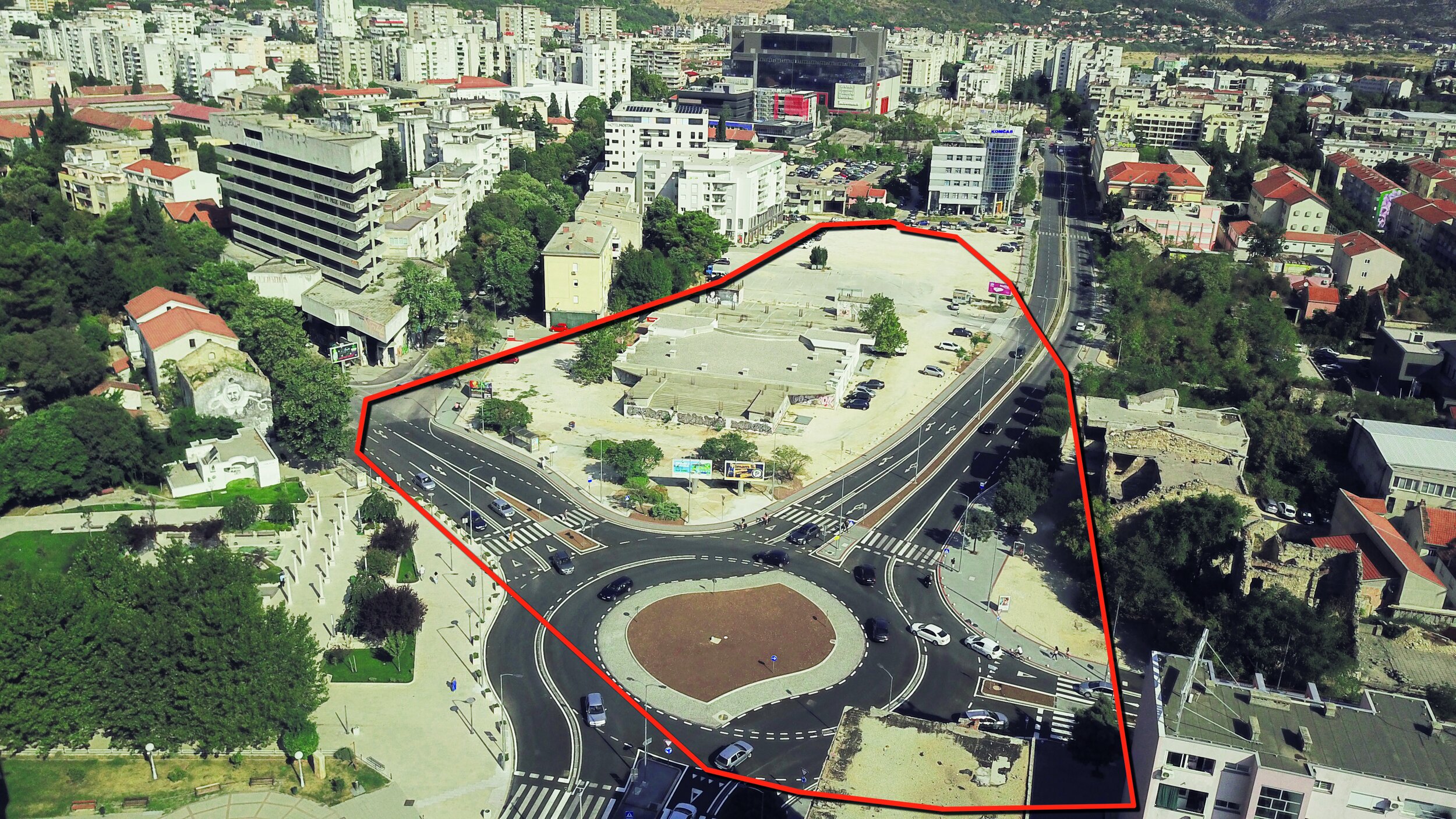
MOSTAR HAD OVER FORTY CEMETERIES (HAREMS)
Author: Hasan Eminović • Illustration: Footage of Lakišić Harem by drone

Exhibition “Mostar harems at the time of devastation 1878–1992ˮ authored by Ahmet Kurt and opened in the Center for Culture on 4 October 2022, reminded the public at large of a long process of devastation and disappearance of numerous cemeteries in Mostar. A total of sixteen panels presented over fifty previously unpublished large-scale maps from the first cadastral survey of Mostar of 1881, which also show the present appearance of these areas, which in turn very graphically reveals the motives and the scale of legal violence against Mostar waqfs.
At the end of the 19th century Mostar had over forty cemeteries. It has been established that in 1931 cemeteries in Mostar covered an area of 205,935m2. They were found next to every mosque and in all neighborhoods of the city. Unfortunately, most of them have been destroyed. Some of them – Šehitluci (at Brankovac), Kantarevac (in Liska Street), cemeteries in the Husein-hodža neighborhood (in Huse Maslića Street) – were turned into parks after 1945. During the aggression on Bosnia and Herzegovina (1992–1995) two out of the three “parks” again became the burial place for killed Mostar residents (harems/cemeteries). In the period between 1931 and 2013 a cemetery area of 106,891m2 (ten hectares) was destroyed. As the consequence of these happenings, the Islamic Community in Mostar now owns parts of the cemeteries in a total area of 99,044m2. Out of the original at least 15,000 old nišans (Islamic tombstones), only about fifty have been preserved to this day.
In the historical epoch (1878–1992), all the three former regimes methodically and systematically destroyed the cemeteries and insolently darted at the waqf property in the utter negation of the national identity of Bosniaks. Judging by historical sources, the only voice which stood against these processes was a protest letter by Husaga Čengić sent to the President of the People's Republic of Bosnia and Herzegovina Đuro Pucar on 13 July 1953. Husaga reminded that it is a burial ground for people who “lived and died for our country and, ultimately, who built Mostar”. In the letter, Husaga underscored that it is a national and cultural asset. “In these cemeteries there were hundreds of tombs (mausoleums) mostly built of the tenelija stone, the tombstones of which are adorned with various verses, typically in Arabic script and in Arabic language, and both the form and the content of these tombs are true cultural monuments; however, out of either wantonness or folly, previous city administrations have razed all these cemeteries and all these cultural monuments”, wrote Čišić.
However, his strong warning did not produce any results. Destruction of cemeteries continued, even of the one where Husaga Čišić himself would be buried in 1956. Veliki Carinski Harem, where Ćišić was buried, occupied an area of 50,000m2. Lakišića Harem had an area of almost 20,000m2.
Footage of Lakišić Harem by drone
Over almost 150 years, cemeteries and other waqf property have been exposed to ruthless devastation and have been an “easy target” in planning documents of all systems of government that solved various infrastructural projects of road and rail traffic, building healthcare facilities (health centers), city parks with necessary equipment etc. Twice in 80 years, the issue of allocating train paths and buildings of the railway station with accompanying facilities in Mostar was solved at the expense of destroying cemeteries: the first time in 1884, when Austro-Hungary built the narrow-gauge railway Mostar – Metković along the right bank of the Neretva and thus usurped and devastated the big Lakišića Harem, and the second time in 1965, when communist authorities built a railway along the left bank of the Neretva, thus usurping and demolishing the big Carinski Harem. According to plans of socialist urban developers, the ground of cemeteries was used for constructing public facilities such as the building of Elektro-Hercegovina (a power utility) and the building of GP Hercegovina (construction company) at Ričina. On the site of Veliki Zahumski Harem a primary school was built.







